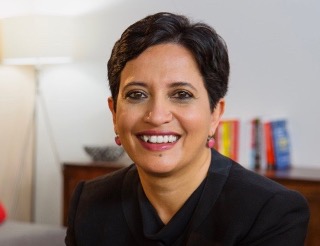New Twist In The Intel–ARM Tale
The Intel–ARM rivalry took a new turn this week with Intel announcing plans to acquire Infineon’s wireless chip business for $1.4 billion. Intel, the world’s largest chipmaker, has been eyeing the smartphone microprocessor market, which is dominated by ARM (NASDAQ:ARMH). ARM, on the other hand, is pushing its low-power processors for netbooks. Let’s take a closer look.
Guest author Nalini Kumar Muppala in his Intel vs. ARM series analyzed ARM’s strengths in the standoff. ARM’s strong point is its low power consumption factor. Intel has been pushing its Moorestown processor for smartphones, which it claims can reach power levels as efficient as ARM processors. But ARM dominates the smartphone market with the likes of Apple, Qualcomm, Samsung, TI, and even Infineon licensing its technology for their mobile devices including smartphones and tablets.
The smartphone market has become crucial for any company wanting to grow. According to In-Stat Research, the processor market for devices with Internet connectivity will see a CAGR of 22.3% through 2013. In 2013, half of those 750 million units are expected to go into smartphones.
Dylan McGrath of EETimes recently reported that Samsung, the No.2 mobile phone vendor and the No.2 chipmaker, has increased its IC revenue at a CAGR of 13.5% while Intel’s IC CAGR has slowed to 3.4% from 1999 to 2009. In fact, IC Insights predicts that at this rate of growth, Samsung has a huge chance of becoming the No.1 chipmaker by 2014–2015. But the Infineon acquisition changes the situation.
Intel finally has a piece of the wireless pie; more precisely, of its most delicious piece, Apple. Infineon has a design win in Apple’s iPhone 4 and on the estimated sale of 10 million units of iPhone 4, it will make about $140 million. Infineon would also bring in business from Nokia. But more important, Intel would gain 3G capabilities which it intends to use in its core notebook PC platform. Intel said it would continue to support ARM-based platforms, which is good news for ARM. ARM in its second quarter results reported revenue of £100 million or $150.3 million, up 42%, and EPS of 2.34 pence, up 146%. Net cash was £202.3 million ($304 million) at the end of the quarter. ARM’s annual revenue in 2009 was £305 million or $489.5 million. Q1 coverage is available here.
The increasing penetration of smartphones continues to benefit ARM. It now has an average of 2.6 ARM processor–based chips per mobile phone. It also increased its share in target markets such as consumer electronics and embedded products. During the quarter, ARM saw strong growth not only in microcontrollers but in other low-cost chips such as Bluetooth and smartcards, leading to its average royalty per chip decreasing to 4.5 cents from 4.8 cents in the prior quarter and 5.7 cents last year.
During the quarter, ARM signed seventeen processor licenses, thirteen of which were for a broad range of applications including intelligent sensors, networking, smart energy meters, and solid state drives. It also signed a multi-year architecture license with Microsoft addressing multiple application areas.
The bigger rival for Intel is Qualcomm, not ARM. Following the news of the Intel–Infineon deal, ARM’s stock hit an eight-year high of $17.44 on September 1. It is trading around $17 with a market cap of $7.3 billion.
Royal Bank of Scotland analyst Didier Scemama says the Infineon deal is largely defensive in nature, fighting back against other ARM processor vendors like Qualcomm that could be planning a move into the notebook market. He adds that Qualcomm’s upcoming Snapdragon chip combines a dual ARM CPU, 3D GPU, 3G, GPS and audio into a single chip, and Intel’s Atom is very far from this today.
The pace of innovation in the smartphone industry is very fast and the Infineon deal will help Intel to keep up with the competition. ARM is the final winner as it gets even Intel to support its architecture.
Featured Videos
Can 1M/1M Help Me Raise Money?
How Does 1M/1M Democratize Entrepreneurship Education?
How Does 1M/1M Democratize Management Consulting?
When Is The Right Time To Join 1M/1M?
Can 1M/1M Help Me With Business Development?
Can 1M/1M Help Me With Market Sizing?
Can 1M/1M Help Me Validate My Product?
Will I Have Private 1-on-1 Sessions In 1M/1M?
How Does 1M/1M Help Entrepreneurs Connect With Silicon Valley?
Mentoring or Consulting?
Why Does 1M/1M Charge $1000 a Year?
Why Does 1M/1M Partner With Local Organizations?
Why Don\’t Mentoring Networks Work?
Why Is It Important To Study With 1M/1M Now?
Dan Stewart Story
Vikrant Mathur Story
